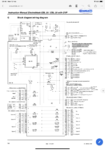Nabsim
Full Member
- Posts
- 4,799
- Likes
- 5,917
@Sharpie i wired the a Votronic is B2B in a similar way @Okta did his, you just break into existing wiring. From memory I think this only required one additional cable, I know it was very quick and easy. I still have starter battery charging from my solar and from mains.
Adding the additional charger was one of the first jobs I did as I knew there was a high risk of damaging the EBL as it has 270ah battery fitted plus an allowance for starter battery and a single 18a charger. My memory is not good enough to remember if I fitted a fuse or not, while I will curse if I didn’t I will also be quite happy if that’s it lol
I am happy to use the dumb Schaudt chargers on gel setting as the voltage is in range, it was purely not enough amps why I was looking to change. Admittedly I do manage my 230v charging cutting off when I get around 90% so it may not be a solution for everyone.
Adding the additional charger was one of the first jobs I did as I knew there was a high risk of damaging the EBL as it has 270ah battery fitted plus an allowance for starter battery and a single 18a charger. My memory is not good enough to remember if I fitted a fuse or not, while I will curse if I didn’t I will also be quite happy if that’s it lol
I am happy to use the dumb Schaudt chargers on gel setting as the voltage is in range, it was purely not enough amps why I was looking to change. Admittedly I do manage my 230v charging cutting off when I get around 90% so it may not be a solution for everyone.

